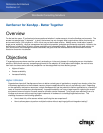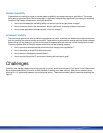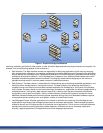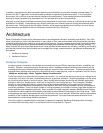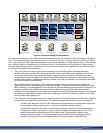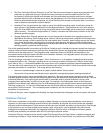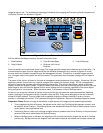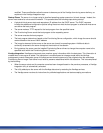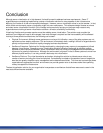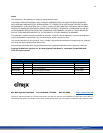
5
In addition, organizations are also interested in becoming more flexible by moving with changing customer needs. To
achieve this, the IT organization must also be able to change or expand the infrastructure easily. In a truly physical
environment, this is difficult as servers require installation and configuration. There are deployments tools available
allowing for these processes to be automated, but it can still take hours to build a single server.
Ultimately, a purely physical XenApp environment has the potential to introduce a number of underutilized servers into the
architecture. Conversely, if resources are fully utilized, then there is an inherent chance of limiting fault tolerance within
the environment. Finding ways to provide higher utilization, while improving availability and flexibility is a one of the key
drivers towards to the adoption of server virtualization solutions like Citrix XenServer.
Architecture
Server virtualization is touted as the ultimate solution for providing better utilization, availability and flexibility. But 100%
server virtualization is not the ultimate solution in many cases. In fact, most environments will achieve the best utilization,
availability and flexibility with a blend of virtual and physical servers. Trying to integrate physical and virtual environments
can be challenging because the processes needed to manage these disparate environments are distinctly different. To
better illustrate how a mixture of both physical and virtual provides the best solution for utilization, availability and flexibility
and how the physical/virtual environments can be merged into a single, cohesive solution, two different architectures will
be explored:
1. XenServer Enterprise
2. XenServer Platinum
XenServer Enterprise
Introducing server virtualization into XenApp environments can improve ROI by improving utilization, availability and
flexibility. However, incorporating server virtualization within a XenApp environment without proper planning can be
counterproductive as the solution chosen might negatively impact the user‟s environment. The environment must be
analyzed before deciding which servers to virtualize and which to keep physical, which is explained in the Citrix article
“XenServer and XenApp – Better Together: Design Considerations”.
Part of the analysis is to determine which systems to virtualize. It is true that just about any server can undergo server
virtualization, but what is the best virtualization solution for a particular workload? Virtualizing XenApp is not the same
as virtualizing a web server or an email server. Many XenApp administrators are familiar with different optimization
settings to make on a XenApp server, which are not required on non-XenApp servers. This is because a XenApp
server is a unique application delivery system that must be understood before it can be optimized. For example,
XenApp can support hundreds of simultaneous user sessions, each with multiple processes resulting in thousands of
concurrent processes. Due to the sheer number of running processes, the number of memory page table entries and
context switches also increases significantly. As an example of the tight integration between XenServer and XenApp,
the XenServer memory algorithms have been enhanced to accommodate the uniqueness of the virtual server. These
enhancements are easily implemented with a flip of a switch on the virtual machine. Without the memory optimizations,
scalability of the virtualized XenApp server would be compromised. The impact these enhancements have will be
demonstrated in a forthcoming scalability document.
Once the analysis is complete and the workload is understood, integrating XenServer Enterprise within a XenApp
environment will most likely result in an architecture similar to that shown in Figure 2:



